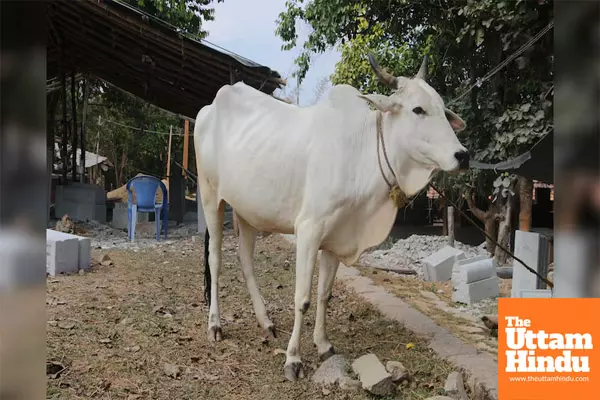
Ongole Cattle Faces Decline in India, While Viatina-19 Fetches ₹40 Crore in Brazil

New Delhi (The Uttam Hindu): India's indigenous Ongole cattle breed is experiencing a sharp decline in numbers domestically, while it continues to thrive in Brazil, where it has become one of the most expensive and highly sought-after breeds in the world. In Brazil, Ongole cattle make up 80% of the 226 million cattle population, mainly bred for beef production. This has led to the rise of high-value supercows like Viatina-19. In a record-breaking sale in February 2025, a purebred Ongole cow, Viatina-19, was sold for $4.38 million (Rs 40 crore), underlining the breed's significant global value.
In contrast, the population of Ongole cattle in India has drastically reduced from 1.5 million in 1944 to just 634,000 in 2019, despite government-led conservation efforts. The overall population of indigenous cattle has also declined by 9% between 2007 and 2012, and another 6% between 2012 and 2019. Meanwhile, exotic and crossbred cattle numbers have surged by nearly 30% during the same period.
Farmers in India prefer crossbred cows for their higher milk yields, despite government schemes like the Rashtriya Gokul Mission (RGM) aiming to promote indigenous breeds. The price disparity between India and Brazil is striking, with an Ongole cow in India selling for around Rs 1 lakh, while prized bulls are priced between Rs 10-15 lakh, far below the multi-crore valuations in Brazil.
Ongole cattle, also known as Ongolu Gitta, originate from Prakasam District in Andhra Pradesh and have long been valued for their heat tolerance, disease resistance, and ability to thrive on low fodder. These traits made them ideal for Indian conditions. Historically, Ongole bulls were exported to Latin America, where they contributed to the agricultural revolution in Brazil, with an estimated 7,000 animals sent as early as 1885.
The decline of Ongole cattle in India is largely attributed to the shift towards crossbred cattle with higher milk yields and reduced demand for draught animals due to mechanization. Additionally, selective breeding for strength, rather than milk yield, has contributed to the breed's decline, as Ongole bulls were once valued for their labor in farming. However, as mechanization has replaced bull labor, the demand for Ongole cattle has diminished.
Veterinary experts at Guntur's LAM Farm, one of the few dedicated Ongole conservation centers in India, are using advanced breeding techniques such as IVF-embryo transfer to maintain the breed's purity. Despite these efforts, the demand for Ongole cattle remains low, posing a challenge to their revival. Furthermore, India's cattle export restrictions, which have been in place since the 1960s, have further limited the breed's potential growth. While India briefly considered lifting the export ban in 2023, the proposal faced significant opposition. In contrast, Brazil’s rigorous cattle lineage tracking has helped maintain and improve the breed, offering a model that Indian farms could replicate to revive the Ongole population.

